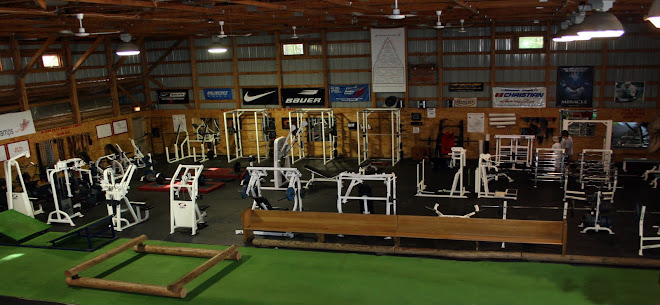Everyone that has heard me speak on different training topics knows my views on training your abdominal muscles. These muscles are commonly known as abs, core, pillar, and many more, but they describe the area between your nipple line down to your mid-thighs. Both your front and your back are included in this area.
I view this area to be one of the most important areas to develop to become a better athlete and better hockey player. This is true because every athletic movement you perform originates in this area. If you want to shoot the puck harder, strengthen your core. If you want to skate faster, strengthen your core. If you want to have better balance, strengthen your core. Do you get the picture?
Your core also needs to be developed because it is the first area of your body that breaks down and gets fatigued during a game. As soon as a player bends over and rests his/her stick on their thighs and glides around, they are starting to get tired. This is the first sign of fatigue. In an average player, this happens late in the second period. With one entire period left to play, your core muscles may already be showing signs of fatigue. One quick and easy way to improve your stamina is to strengthen your core.
Your core is both the front of your body and the back. All four areas (red, blue, green, and purple) need to be exercised for your performance to be improved. There are different exercises for each area of your core. For instance, a regular crunch works your “red dot” area, trunk twists work your “blue dot” area, and supermans work your “green dot” and “purple dot” area.
My experiences show me, when you are training your core you can train it all the time. A general rule of thumb when in the weight room is to give yourself a minimum of eight hours of rest between workouts, or one workout daily. However, I do not find this to be true with your core. You can train your core as often as you would like.
Because your core is the foundation of all athletic movements, during a workout, a practice, or a game, your core is very involved and is always working. To insure your core is up to the challenge of all this work, we need to prepare your core. We prepare the core by doing sit-ups. I use the word sit-up for a generic term for all movements that work your core. A crunch is a sit-up, a leg lift is a sit-up, a bridge is a sit-up, etc.
The more you work your core, the stronger it becomes. To get the most out of your core, start slowly, but try to work up to 1,000 sit-ups each day with the exception of game days. The only thing you should do on game day is prepare for and play a great game. Every other day, if you complete 1,000 sit-ups you will be better preparing yourself for games.
One thousand sit-ups a day sounds like a lot, but if you break it down it takes no time and little effort. Start off by picking ten different types of sit-ups, two from each category. Do 100 of each one. There are four categories; two from each category makes 800 sit-ups. For the last 200, choose any of your favorite sit-ups. Spread your sit-ups out evenly through out the day. Complete them in increments of 100 or 200. Do 200 right when you wake up, 200 at lunchtime, 100 before practice, 100 after practice, 100 after dinner, 200 after homework, and 100 right before you go to bed. It should take you about two minutes to complete 100 sit-ups or 20 minutes to complete all one thousand of them. This isn’t a lot to ask to become a better athlete, is it?
When you break it down, it is easy to complete one thousand sit-ups daily, and become a better hockey player. It is the little things that make big players.
Good luck with your training! Any questions, please ask.
MHC – “Helping Others, Help Themselves!”
Friday, November 13, 2009
Subscribe to:
Post Comments (Atom)



No comments:
Post a Comment